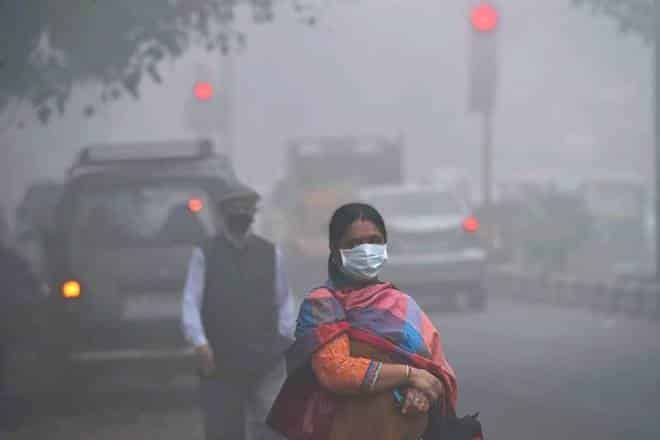
NEW DELHI: An analysis report released by Centre for Science and Environment (CSE) on Friday, August 30, said that although pollution levels in Delhi have shown a declining trend, the capital still needs to reduce PM 2.5 levels by around 65 per cent to meet clean air standards mentioned under the National Clean Air Programme (NCAP).
The pollutant PM 2.5 is the most critical pollutant present in the capital’s air. The pollutant can penetrate deep inside lungs adversely affecting public health.
The CSE report was a reminder that despite the ongoing efforts for pollution control, it’s still a long way to go to meet clean air quality standards.
The annual average of PM 2.5 levels in Delhi between 2016-2018 has been 115 µg/m3 which is almost three times more than the permissible limit set by the National Ambient Air Quality Standard which is 40µg/m3. However, in a report by Central Pollution Control Board (CPCB) submitted to the Parliament, the analysis highlighted that the annual average of PM 2.5 levels during the 2016-2018 period was comparatively lower than the corresponding period of 2012-2014.
The CSE released its analysis report in a roundtable session on the steps and measures to be taken under the NCAP. It recognised the stabilisation of pollution levels to implementation of initiatives such as the Graded Response Action Plan (GRAP) and Comprehensive Action Plan (CAP) in Delhi-NCR.
In January 2017, the GRAP was implemented to tackle various levels of pollution in Delhi. Whereas, measures to combat moderate and poor levels of pollution are implemented during the summer season, measures to fight very poor and severe levels of pollution are implemented during the winter season (October to March).
Under the GRAP, measures for ‘severe plus’ or emergency levels of pollution are implemented when PM 2.5 and PM 10 levels breach the value of 300 and 500µg/m3, respectively for 48 hours or more.
Using cleaner fuel, increasing efficiency of vehicles, strict actions of industrial pollution control, phasing out of dirty industrial fuels such as pet-coke, furnace oil and dust control at construction sites, prohibiting entry of trucks within city limits, among other measures were the major steps taken under the two plans.
Anumity Roy Choudhary, executive director, research and advocacy, CSE said, “The decreasing pollution trend is a good sign for a city like Delhi, which has been facing high levels of air pollution. While this level of action has helped in stabilising the problem, much aggressive action is needed to achieve 65 per cent cut in PM 2.5 level to meet the clean air targets.”
The report, highlighting the limited progress made, said that the number of severe-plus air quality days in the city between 2016 -18 was less than 15, as compared to 20 to 40 days during the 2011-14 period.
The report further mentioned that during the winters of 2016-2018, the daily pollution peak of PM 2.5 levels reduced to 7 to 10 folds the permissible limits from 13 to 14 times experienced during 2011-2014 period. The daily permissible limits of PM 2.5 levels are 60µg/m3.
The report concluded, “Delhi, as well as other cities, need to be prepared for third-generation action for clean air in terms of implementation, enforcement, compliance, and institutional capacity to implement design rich solutions across all key sectors of pollution.”

